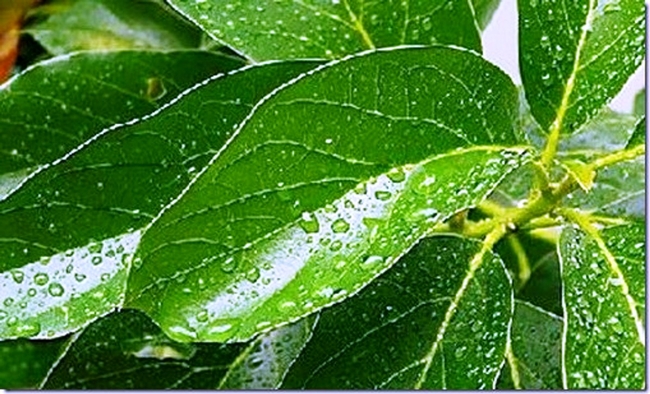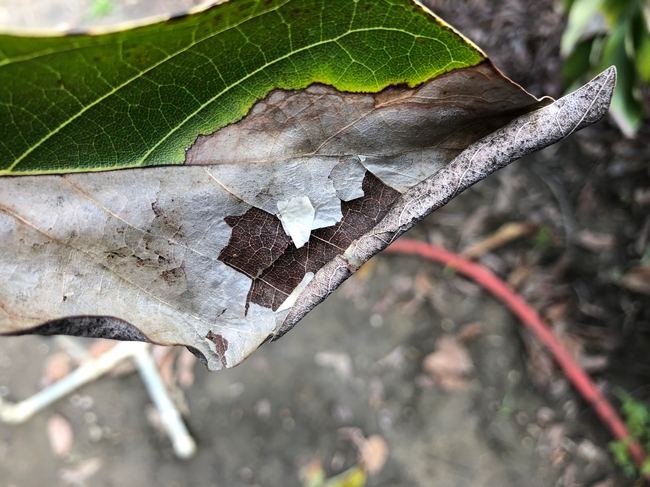Foliar fertilizer application is sometimes promoted as an effective means of supplying nutrients to avocado. On the market are various products being promoted as foliar nutrients for avocado, some proponents even suggest that their products do away with the need for soil applied nutrients. The nature of the avocado leaf severely limits its capacity to absorb foliar sprays.
The structure of plant leaves has evolved primarily to capture sunlight and exchange gases, roots have evolved to absorb nutrients and water and anchor the plant. Any absorption of nutrients by leaves is therefore likely to be more fortuitous than by design. In some crops passive nutrient absorption by leaves is occasionally sufficient to supplement the supply of nutrients taken up by the roots. Most often this involves trace elements, which as their name suggests are required in very small amounts (eg. copper and zinc). However if non-mobile elements or elements with limited mobility in the plant (eg. calcium, phosphorus, zinc, boron and iron) are absorbed when foliar sprayed they are not likely to make it down to the roots where they are also needed. Most nutrients will move freely in the water stream but the movement of many is restricted in the phloem, hence leaf applications don't meet the requirements of deficient trees. Occasionally major elements (such as nitrogen and potassium) are applied to make up for a temporary shortfall or provide a boost at a critical time. Citrus is an example of a crop where some benefits from foliar applied nutrients have been reported.
The ability of the leaf to absorb nutrients from its surface must depend to some degree on the permeability of its epidermis (outer layer) and the presence and density of stomates (pores for the exchange of gases). Scanning Electron Microscope studies of mature leaves and floral structures in avocado show the presence of a waxy layer on both the upper and lower surfaces of mature avocado leaves (Whiley et al, 1988). On the upper surface the wax appears as a continuous layer and there are no stomates. On the lower surface the wax layer is globular and stomates are present. Blanke and Lovatt (1993) describe the avocado leaf as having a dense outer wax cover in the form of rodlets on young leaves and dendritic (branching) crystals on old leaves including the guard cells (guard cells surround stomates). The flower petals and sepals in avocado have stomates on their lower surfaces and no wax layers on either surface, which might explain why floral sprays of boron might work.
Blanke, M.M. and Lovatt, C.J. 1993. Anatomy and transpiration of the avocado inflorescence. Annals of Botany, 71 (6): 543-547.
Whiley, A.W., Chapman, K.R. and Saranah, J.B. 1988. Water loss by floral structures of avocado (Persea americana cv. Fuerte) during flowering. Australian Journal of Agricultural Research, 39 (3): 457-467.
The avocado leaf, water beading up on the waxy cuticle.
An avocado leaf with its cuticle (white, paperlike surface) being exposed by underlying leaf fungi.
Attached Images:

